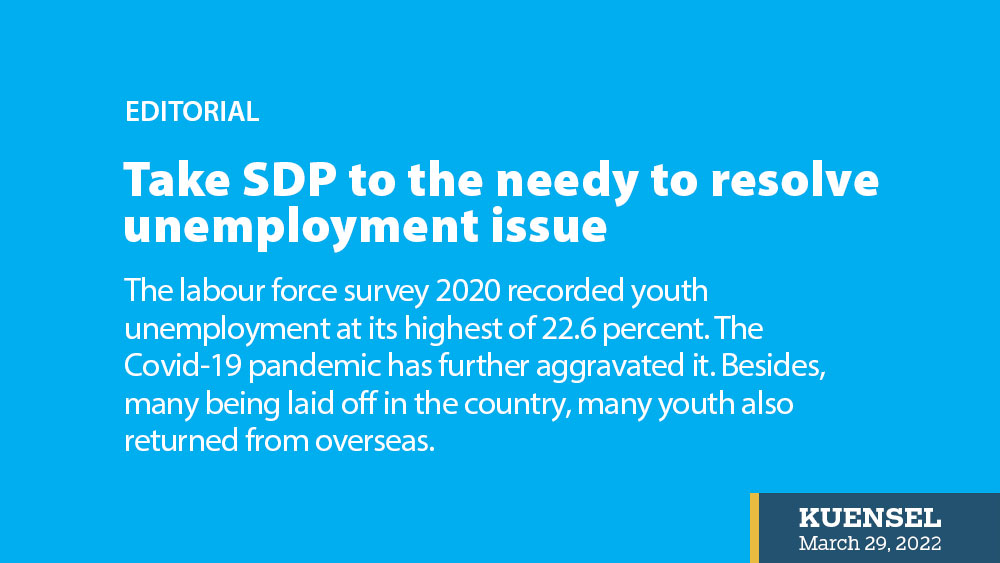The labour force survey 2020 recorded youth unemployment at its highest of 22.6 percent. The Covid-19 pandemic has further aggravated it. Besides, many being laid off in the country, many youth also returned from overseas.
Agencies working with youth are tasked to facilitate youth employment through skills training, direct engagement, self-employment promotions and improving condition of initiatives.
But the sad reality has struck again. After spending about Nu 35 million, only 11.4 percent of 288 people, who received through skills development plan (SDP) last year is employed. More than 441 are undergoing various training. We don’t know how many will be employed from the cohort.
SDP was supposed to mitigate unemployment problems caused by the pandemic and ensure inclusive and suitable recovery through effective interventions in skills training and professional development.
If the employment rate after such a huge investment is negligible, it raises many questions. The programme targeted to train 5,000 jobseekers. What will be the use of the training if job seekers are back in the market after the training?
Youth and unemployment issue has become the chicken-and-egg conundrum. We have been discussing that for decades and have not been able to find a solution yet.
If initiatives like SDP cannot address the skills and demand mismatch, the future of resolving unemployment issue looks bleak as the labour ministry identified courses in priority sectors for the programme.
Other initiatives like the Build Bhutan Project started to mobilise, create and manage a pool of skilled workforce, promote the construction sector, and retain the workforce in it, but we all know its progress and success.
There is also the national skills development initiative, which intends to provide easy access to skills training, meaningful engagement, enhancing skills and competencies and preparing the workforce.
One solution to addressing the unemployment issue is taking the skills training to places it is needed. Many youth and farmers in Langthel gewog of Trongsa benefitted from the SDP. More gewogs should implement it.
Records the ministry maintained state there were 19,435 registered job seekers from 2018 to November 30, 2021. About 6,999 youth are unemployed. If we cannot provide meaningful employment to these many people, we should not hope of achieving much.
It is also time we find out why job seekers still prefer public sector jobs and not take up vocational jobs. We have been discussing and promoting vocational jobs since 1990s and if our youth are not interested in it, we have failed miserably to make it attractive.


